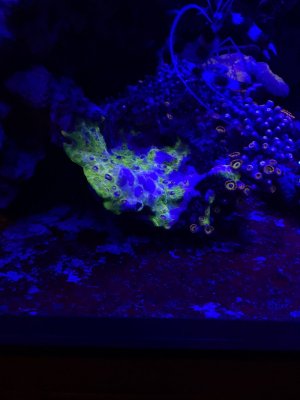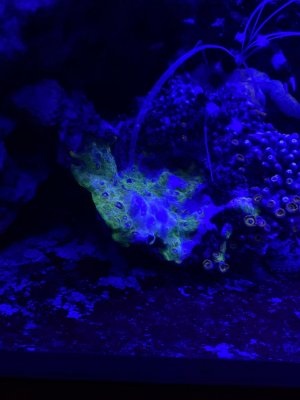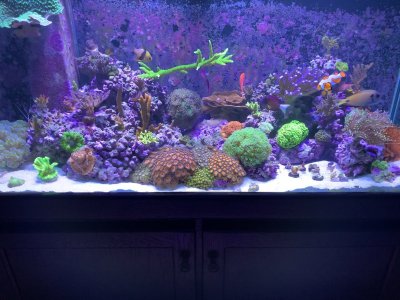- Joined
- Mar 21, 2018
- Messages
- 30
- Reaction score
- 22
I need some help with my tank. For years I was under the impression nitrates should be near zero. More recently I am under the impression zero nitrates is bad and it should be 3-5 ppm range. Now starts my journey of confusion.
I have several chalice corals that have started dying from the outer rim inward. I have other chalice corals that have bleached out. Trumpet corals that I was splitting up giving to friends are now retracting into the skeleton and dying. Yet anemones (bubble) have gone from one to five. Clams that were two inches are now six to eight. Polyps have become annoying weeds.
I thought the bleaching was due to nitrates too high so it have been doing 20-25% water changes every other day for a week. I haven’t made a dent in the nitrates. Today with more reading is see people with nitrates 5-10 ppm.
What is the appropriate nitrate levels. Am I chasing my tail with nitrates when in realty my issue is something else.
Tank:
160DT with 40 gal refug
Live rock, bare bottom, protein skimmer, Ca++ reactor.
Today’s parameters:
Temp: 77.8
PH: 7.92
DKH: 10
Ca: 424
Phosphate: 0.08
Mg: 260
Nitrate: > 5 (like an idiot I knocked over reagent so couldn’t do high range). Nitrate measured by Red Sea nitrate pro and new Hanna nitrate checker
In the attached poor picture is one representative coral. The “Blue” is completely white bleached tissue


I have several chalice corals that have started dying from the outer rim inward. I have other chalice corals that have bleached out. Trumpet corals that I was splitting up giving to friends are now retracting into the skeleton and dying. Yet anemones (bubble) have gone from one to five. Clams that were two inches are now six to eight. Polyps have become annoying weeds.
I thought the bleaching was due to nitrates too high so it have been doing 20-25% water changes every other day for a week. I haven’t made a dent in the nitrates. Today with more reading is see people with nitrates 5-10 ppm.
What is the appropriate nitrate levels. Am I chasing my tail with nitrates when in realty my issue is something else.
Tank:
160DT with 40 gal refug
Live rock, bare bottom, protein skimmer, Ca++ reactor.
Today’s parameters:
Temp: 77.8
PH: 7.92
DKH: 10
Ca: 424
Phosphate: 0.08
Mg: 260
Nitrate: > 5 (like an idiot I knocked over reagent so couldn’t do high range). Nitrate measured by Red Sea nitrate pro and new Hanna nitrate checker
In the attached poor picture is one representative coral. The “Blue” is completely white bleached tissue



















